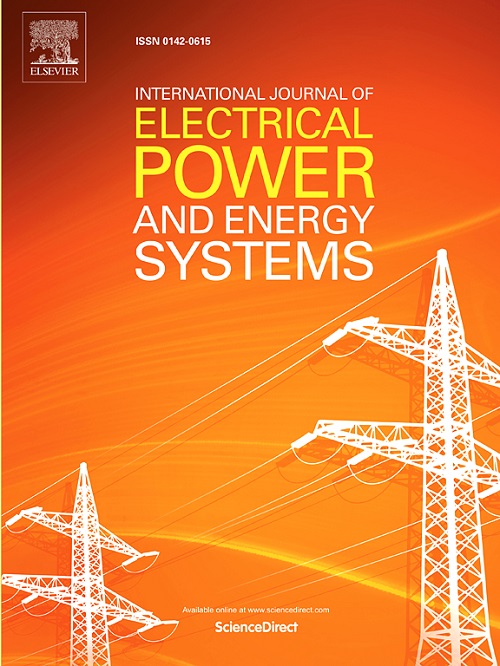负荷和光伏发电对配电网母线运行P、Q包线的影响
IF 5
2区 工程技术
Q1 ENGINEERING, ELECTRICAL & ELECTRONIC
International Journal of Electrical Power & Energy Systems
Pub Date : 2025-09-13
DOI:10.1016/j.ijepes.2025.111100
引用次数: 0
摘要
消费者拥有的小规模低碳技术(LCT),特别是太阳能光伏(PV)发电的增加,导致了可行运行包线的计算,这使得配电网络运营商(DNOs)能够在不影响网络运营的情况下从这些PV中受益。考虑可控负荷、负荷模式、光伏发电规模和位置的影响,计算并分析了太阳能光伏发电配电网中公交车日前可行运行区域(包络)。在DIgSILENT和MATLAB环境下,利用基于拉丁超立方体采样(LHS)的概率潮流仿真和凸包估计,在考虑网络电压和线路负荷约束的情况下计算包络。莫里斯筛选敏感性分析用于确定哪些公交车的信封对不同位置PV大小的变化最敏感或最不敏感。研究结果显示,一部分可控负载可以根据一天中的时间扩大或缩小信封,从而深入了解负载削减和投资回收期。不同的荷载模型产生不同的包络,强调了准确的荷载建模的重要性。此外,该研究还展示了一个区域的包络尺寸变化如何影响另一个区域的包络尺寸,强调了在连接/增加网络区域的PV尺寸之前,需要仔细考虑以响应网络负载或LCT连接的增加。论文还强调了该方法在适应各种规模网络(包括不平衡网络)方面的灵活性。此外,本文还介绍了在包络层内操作的、基于风险的区域,以提高方法的有效性。本文章由计算机程序翻译,如有差异,请以英文原文为准。
The influence of load and PV generation on operating P and Q envelopes of distribution network buses
The increase in consumer-owned small-scale Low Carbon Technologies (LCT), solar photovoltaic (PV) generation in particular, has led to the calculation of feasible operating envelopes, which allows distribution network operators (DNOs) to benefit from those PVs without compromising network operation. This paper calculates and analyses day-ahead feasible operating regions (envelopes) of buses in a distribution network with solar PVs, considering the impacts of controllable loads, load models, and PV sizes and locations. The envelopes were calculated considering network voltage and line loading constraints using Latin Hypercube Sampling (LHS)-based probabilistic load flow simulation and convex hull estimation in DIgSILENT and MATLAB environment. Morris screening sensitivity analysis was used to determine which buses’ envelopes were the most or least sensitive to changes in PV sizes at different locations. The findings revealed that a share of controllable loads could expand or shrink the envelopes depending on the time of the day, providing insight into load curtailment and payback periods. Different load models produced different envelopes, emphasising the significance of accurate load modelling. Moreover, the study demonstrated how changes in envelope sizes in one area affect those in another, highlighting the need for careful consideration prior to connecting/ increasing PV size in an area of the network in response to an increase in network load or LCT connections. The paper also highlighted the methodology’s flexibility in adapting to networks of various sizes, including unbalanced ones. Additionally, the paper introduced operating, risk based, zones within the envelopes to improve the approach’s effectiveness.
求助全文
通过发布文献求助,成功后即可免费获取论文全文。
去求助
来源期刊
CiteScore
12.10
自引率
17.30%
发文量
1022
审稿时长
51 days
期刊介绍:
The journal covers theoretical developments in electrical power and energy systems and their applications. The coverage embraces: generation and network planning; reliability; long and short term operation; expert systems; neural networks; object oriented systems; system control centres; database and information systems; stock and parameter estimation; system security and adequacy; network theory, modelling and computation; small and large system dynamics; dynamic model identification; on-line control including load and switching control; protection; distribution systems; energy economics; impact of non-conventional systems; and man-machine interfaces.
As well as original research papers, the journal publishes short contributions, book reviews and conference reports. All papers are peer-reviewed by at least two referees.

 求助内容:
求助内容: 应助结果提醒方式:
应助结果提醒方式:


